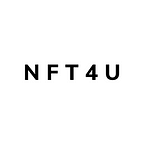Creating a History. NFTs may be the future of art — what is happening?
Emerging technologies build opportunities for different industries, and creative is no exception.
Lockdown and COVID-19 have impacted our society and rapid increase in online usage around the world. Many industries including creative had to adapt to global digitalization. Galleries and museums were behind a locked door for a while, the situation has forced the help of the technology: online galleries and virtual tours been integrated. Technology and creatives have intertwined creating new phenomena — NFT.
We have gathered together with AI, blockchain specialists and artists to discuss the current situation. And here is what happened.
NFT TECHNOLOGY
You’re probably most familiar with blockchain as the underlying process that makes cryptocurrencies possible. NFTs exist on a blockchain, which is a distributed public ledger that records transactions. NFTs are typically held on the Ethereum blockchain under smart contracts. It is a digital asset that can be minted from a digital object (file). Watch a video from our meetup to understand more about NFT technology.
NFT IN A FORM OF ART AND SELF EXPRESSION
At the moment we see varieties of digital objects minted on the blockchain. And major includes Art and Collectibles. Digital Art mostly. Essentially, NFTs are like physical collector’s items, only digital. So instead of getting an actual oil painting to hang on the wall, the buyer/collector gets an exclusive digital file instead. Fractional ownership.
DECENTRALIZATION
In case you have missed this important fact. NFT movement is created on decentralization and not many are aware. We have asked a few digital artists that started minting their art way before hype happened. And they are not happy. So what is decentralization?
“Decentralization has, not only an administrative value but also a civic dimension since it increases the opportunities for citizens to take interest in public affairs; it makes them get accustomed to using freedom. And from the accumulation of these local, active, pernickety freedoms, is born the most efficient counterweight against the claims of the central government, even if it were supported by an impersonal, collective will.”. — Alexis de Tocqueville, French advocate and diplomat
The goal of decentralization in any area is a response to the problems of centralized systems. Participation, diversity, efficiency and conflict resolution are the main objectives.
SO WHAT TYPE OF ART IS IT?
You have probably noticed a common style or genre in each NFT artwork. Cyberpunk. It includes a wide variety of visual aesthetics but is recognized by its encompassing theme of “high tech, low life.”. This became prominent in the 1980s. Settings in the cyberpunk genre range from the richly coloured, rough-around-the-edges urban jungles of Akira (1988), to the hyper-futuristic, neon cityscapes and bleak wastelands of Blade Runner 2049 (2017), with the first work in cyberpunk fiction being William Gibson’s Neuromancer novel. Themes are broad, but the cyberpunk aesthetic is often used to convey deeper meanings and commentate on modern society and sometimes predictions of our future society.
ENVIRONMENTAL CONCERNS
The rising understanding of NFTs’ environmental effects coincides with mounting evidence of crypto technology’s negative consequences.
Recently, Elon Musk has tweeted that Tesla is looking at alternative cryptocurrencies that use less energy per transaction.
Attempts to measure the environmental effect of mining and NFTs have shown uncertain results. However, experts agree that the blockchain’s total carbon footprint is massive.
SUSTAINABLE NFT FUTURE
No one wants to harm humanity and our planet. It is great to see digital artists and others taking charge for a sustainable NFT future.
Ethereum revealed that it will abandon the PoW model in favour of a "proof of stake" (PoS) model that rewards users based on how much cryptocurrency they already own, minimizing computational effort.
The shift to “Ethereum 2.0” could reduce the energy consumption of NFTs by 99%, because “proof of stake has basically no emissions,” since it doesn’t require mining, McGill said.
